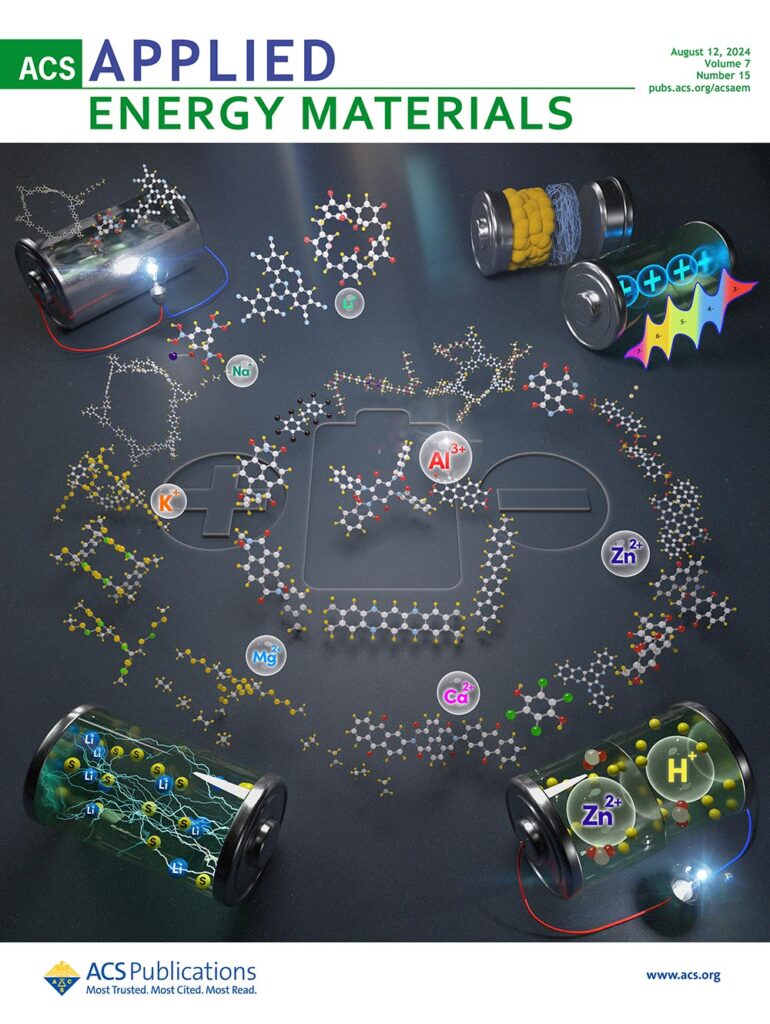
Journal Cover / ACS Applied Energy Materials Vol 7 / Issue 19
https://pubs.acs.org/doi/10.1021/acsaem.3c02382
Abstract
Rechargeable monovalent and multivalent metal-ion batteries have emerged as sustainable energy storage systems in view of their low cost, high safety, rich resources, and abundance of metallic resources (monovalent metals such as Li, Na and K and multivalent metals such as Mg, Ca, Zn and Al). However, their further development and application are hindered by the lack of high-energy electrode materials. Organic battery materials (OBMs) in both monovalent and multivalent metal–organic batteries (MOBs) offer unique opportunities thanks to their abundant structural diversity and tunability. This Review presents the recent progress on the developments of OBMs (Collection of organic battery materials from the recently published articles in a single issue of the three ACS journals such as ACS Applied Polymer Materials, ACS Applied Energy Materials, and ACS Applied Materials& Interfaces) in enhancing the electrochemical performances of MOBs, including nonaqueous rechargeable monovalent Li/Na/K-ion batteries, Li–S batteries and aqueous/nonaqueous rechargeable multivalent Mg/Ca/Zn/Al-ion batteries. We first presented the structural characteristics, energy storage mechanism and electrochemical performance of different types of OBMs in MOBs, including redox-active polymer, organosulfur compounds, redox-active porous polymers, conductive polymers, organic carbonyl compounds, small molecules, aromatic polymers/polyimides, polymer frameworks, covalent-organic frameworks and metal–organic frameworks and so on. Further, an overview of OBMs in MOBs, the correlation between molecular structure and electrochemical redox properties, and electrolyte system with working potential range is also provided and discussed. This is then followed by an overview on different strategies employed to realize the high-performances of MOBs through structural engineering, polymerization, hybridization, and amorphization of OBMs. Finally, a conclusion and perspective is given for the future development in OBMs for MOBs.

